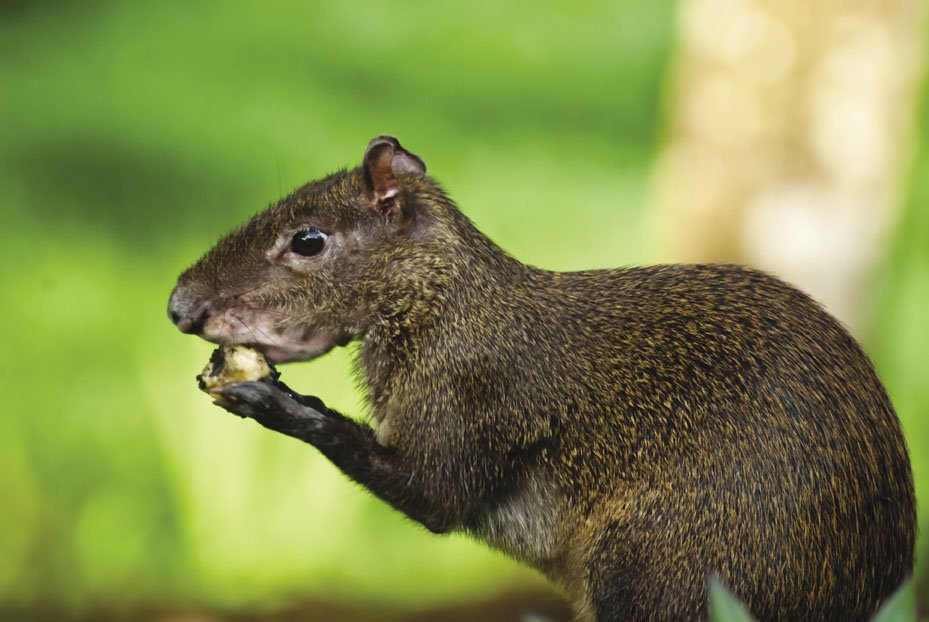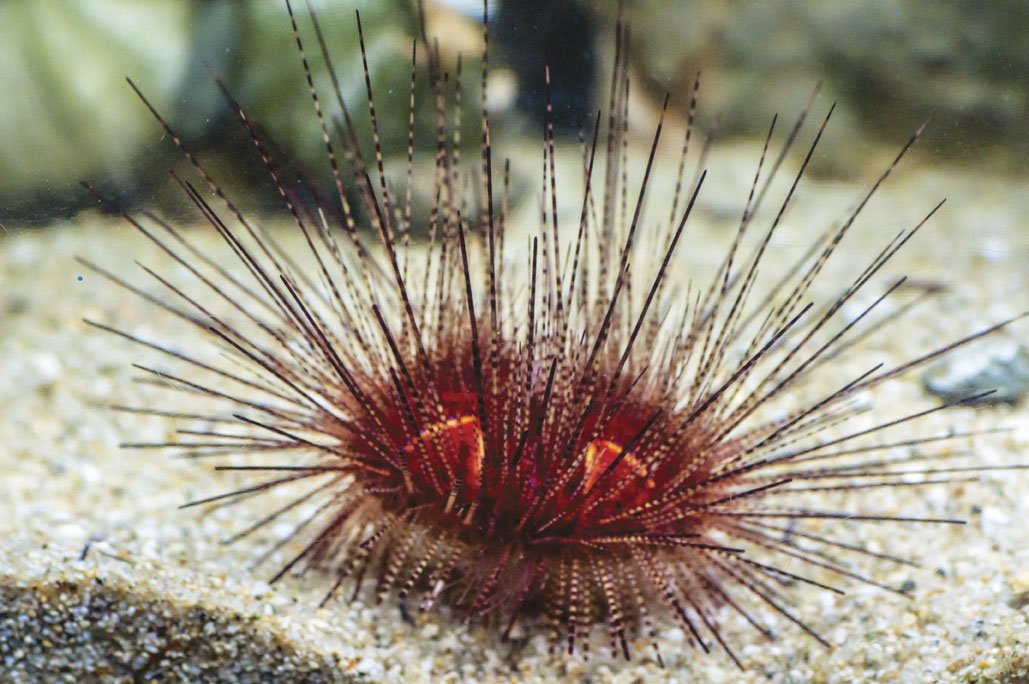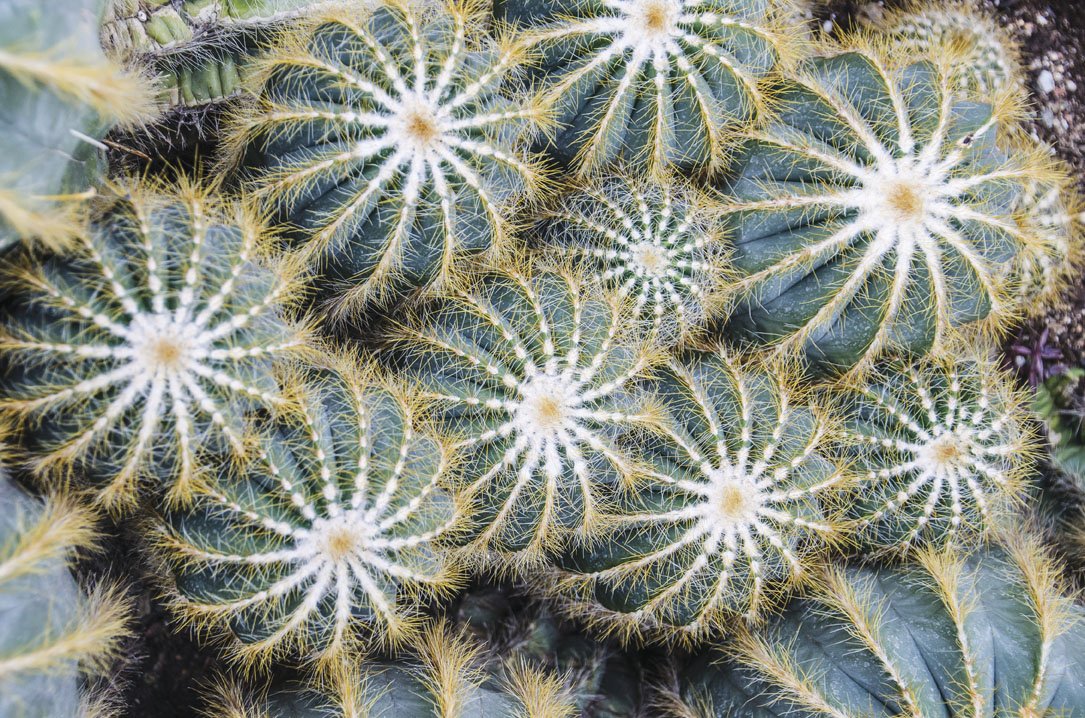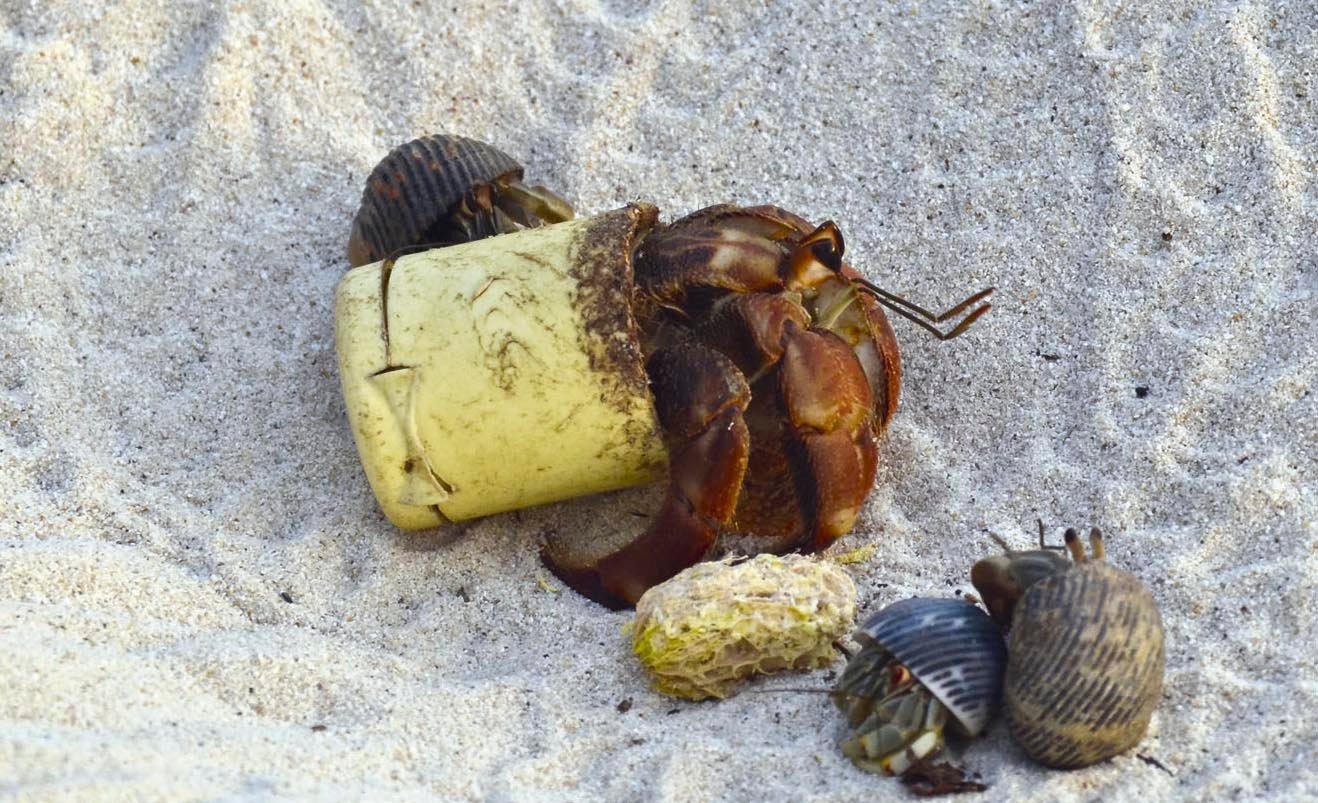
The Importance of Biodiversity
Text and fotos: Fundación Azul-Verde-Azul
You may have recently heard the term “biodiversity,” which is often used by scientists and conservation groups. Here, we present a brief explanation of biodiversity and some examples of its importance to everyone, whether they are concerned with science or not.
Biodiversity refers to the wide variety of life forms that exist on planet Earth, including genes, species, and ecosystems, each of which has a role and is inter-connected to all the rest. Biodiversity is essential to ecological processes because it keeps the cycle of life in proper working order for producing food, preventing illness, and keeping floods at bay.
Biodiversity and Food Security
There are millions of varieties of fruits, vegetables, grains and nuts, so why do we eat only a few of them? Modern agriculture simplifies the workings of natural ecosystems by replacing their diversity with a small number of domesticated species for large-scale use. According to a University of California study by Miguel Altieri, the majority of the world’s cultivated fields contain just twelve species of grains, twenty-three species of vegetables, and thirty-five species of fruits and nuts, meaning that fewer than seventy species occupy around 3.6 billion acres on Earth; this is in contrast with the hundreds of species found in just 2.5 acres of tropical forest.

In the United States, for example, industrial farming relies on one species and a handful of varieties. The National Academy of Sciences notes that 60% to 70% of bean fields contain only two or three varieties; 72% of potato fields have just four varieties; and 53% of cotton fields have three varieties. In contrast, food production in Latin America is less industrialized, meaning that 70% to 90% of fields cultivate many species in agroforestry systems, which produce 15% to 20% of the global food supply. Less industrialized cultivation systems feature greater genetic diversity; for example, Perú cultivates some fifty species of potato for commercial use. Diversity in cultivated fields makes it possible to work with various types of soils and micro-climates in different seasons.
In addition to giving us a more varied diet, this kind of diverse agriculture is also more stable, because monocultivation and limited genetic variability make crops more vulnerable to pests or drastic environmental changes. For example, the use of just one species or variety of rice makes us dependent on this variety’s natural defenses; if that species of rice is not resistant to a new pest or sickness, the entire crop will be lost. In contrast, if various species of rice are cultivated simultaneously, it is more likely that one of the cultivated species, or a group of genes in that population, will be resistant to an unfamiliar pest, and the entire crop will not be lost. Eliminating genetic diversity also eliminates possible resistance to future problems.
The advantages of biodiversity in food production go well beyond the species we harvest. For example, 70% of crops around the world —35% of the food we eat— are pollinated by animals that visit flowers.

Bees are essential to the pollination of some 130,000 plants, including fruits like melons and blackberries and vegetables like pumpkins. A University of Würzburg study notes that enlarging the habitat of wild pollinators near fruit crops by 10% to 50% would increase seed production by 150%, because crops benefit more when pollination is carried out by a large number of wild species rather than one or two domesticated species.
Other wild animals in fields also help control pests. According to a Cardiff School of Biosciences study, birds, spiders, and beetles control pests and herbivores that attack crops, reducing excess pesticide use. Pesticides kill these beneficial animals, which in turn increases the need for chemicals. The more varied the diet of these predators, the healthier they will be, making them better able to fulfill their role in the ecosystem.
It has been proven that greater microbial diversity in soil is related to more productive soil with fewer diseases. A study published in the Agronomy Journal showed that the use of organic fertilizer (compost) raises the production of corn, soy, and wheat by up to 11% by increasing the nutrients in the soil, due to an increase in predatory insects and a decrease in parasitic nematodes.
The situation is no different in the ocean. An example of the interdependence of species can be found in the environmental disaster caused by intensive fishing of sea otters in the northern Pacific during the 18th and 19th centuries. Sea otters feed on sea urchins, so when the urchin’s natural predator was removed, there was a rapid increase in the sea urchin population. Sea urchins in turn feed on kelp forests, a macro-algae that nourishes many other animals and is at the bottom of the food chain.

The increase in sea urchins significantly reduced the amount of kelp, which decreased the populations of all the other fish who also depended on the kelp forests. The communities went from domination by the beneficial algae to domination by sea urchins, whose uncontrolled growth depleted the food source and habitat of many other species, including commercially valuable fish.
The Biodiversity of Ecosystems
An abundance of species provides us with a more varied diet and food that is safer and has fewer chemicals. There are other benefits as well; many species fulfill similar functions yet react differently to human modifications of the environment, so biodiversity helps ecosystems develop greater resilience. In the face of possible natural disasters, some species manage to resist changes and continue to perform their functions, allowing those that can’t a chance to recover their equilibrium.
The benefits conferred by the ecosystems surrounding human beings are called “environmental services.” One example is water regulation: plants and animals associated with the soil regulate the water cycle, helping us avoid floods and drought. The more than 300,000 species of plants on our planet also clean our air and keep our soil in place, preventing erosion and landslides.
Other advantages of biodiversity include pest control and the active compounds in all kinds of animals, plants, and bacteria that can be used to create vaccines. Malaria —eighty million to three hundred million cases of which are still reported worldwide— is transmitted by a parasite (Plasmodium vivax) whose vector is the mosquito. However, in some parts of the Amazon jungle with small human populations, many warm-blooded animals, and a large number of mosquito species, malaria parasites do not affect humans, but are naturally controlled as a result of the ecosystem’s great biodiversity.

There is a good reason that scientists from the Department of Epidemiology of the Faculty of Public Health of the University of São Paulo (Brazil) have recommended that the World Health Organization consider the question of biodiversity in its programs for eradicating this disease. The idea that malaria can be prevented by razing the forest has been shown to be a fallacy: when there are many mosquito species, they compete for resources with malaria carrying-mosquitoes, and if there are many warm-blooded animals, these latter act as hosts for the parasite, but do not transmit the disease. A healthy ecosystem, without hunting or fumigation, naturally controls the spread of this disease.
Alterations in Biodiversity
Despite all the environmental services provided by nature, the populations of animals that pollinate crops, enrich the soil, and maintain the equilibrium that prevents disasters are declining. A study published in the journal Science states that the worst threat to biodiversity is changes in land use, such as when forests are plowed under for fields or natural habitats are urbanized. Biodiversity is also seriously affected by climate change, nitrogen sinks, biotic changes, and high concentrations of carbon dioxide.
Reconciling Biodiversity and Development
One strategy is to identify hot spots, i.e. places with the largest number of species per square yard, and make them a worldwide conservation priority. A group of scientists, led by the University of Oxford’s Norman Myers, identified the world’s twenty-five top environmental hot spots and discovered that 44% of vascular plants and 35% of vertebrates in the world are found in these twenty-five sites, which occupy just 1.4% of the earth’s land surface. They are actually regions, and ten of them are in the Americas, including the California floristic province, all of Central America, the Caribbean, Chocó, Darién, western Ecuador, the Andes mountain range, central Chile, the Amazon jungle, and the Brazilian Atlantic forest.

There are different strategies for protecting biodiversity and using it to the planet’s advantage. It is not enough to declare protected areas in national parks around the world —far greater efforts are required. For example, creating natural corridors that connect protected areas and provide them with buffer zones will significantly increase the functionality of these “life preserves,“ however small they may be. Another very effective strategy is to connect urban parks, creating a complex of stepping-stones between protected areas around cities. Another very simple technique is the use of living fences in fields, creating corridors that serve as habitats for natural pollinators and species that prey on pests.
By conserving unknown species, we are conserving future discoveries that could help the human race. Bioprospecting is the search for organisms and substances that could potentially benefit humans, and it is a very active field of research worldwide. In Panama, the Institute of Advanced Scientific Research and Technology Services (INDICASAT) isolated some 5,000 fungi associated with sponges in the Pacific and the Panamanian Caribbean. Their potential for use in pharmaceutical products is currently being evaluated. Some of the research has already borne fruit: Marcelino Gutiérrez’ research team found active, malaria-resistant compounds in bacteria associated with octocorals in the Panamanian Pacific; these species are just being described now, so they still do not have names. We had no idea they even existed and now they may hold a cure for this disease.
Although several economic studies have shown the value of the services biodiversity provides to humans, the reality is that there are so many services and they are so complex that many processes could not happen without them, which makes biodiversity invaluable. More individuals, more genetic diversity, and more recombination means less sickness and less danger of extinction.



